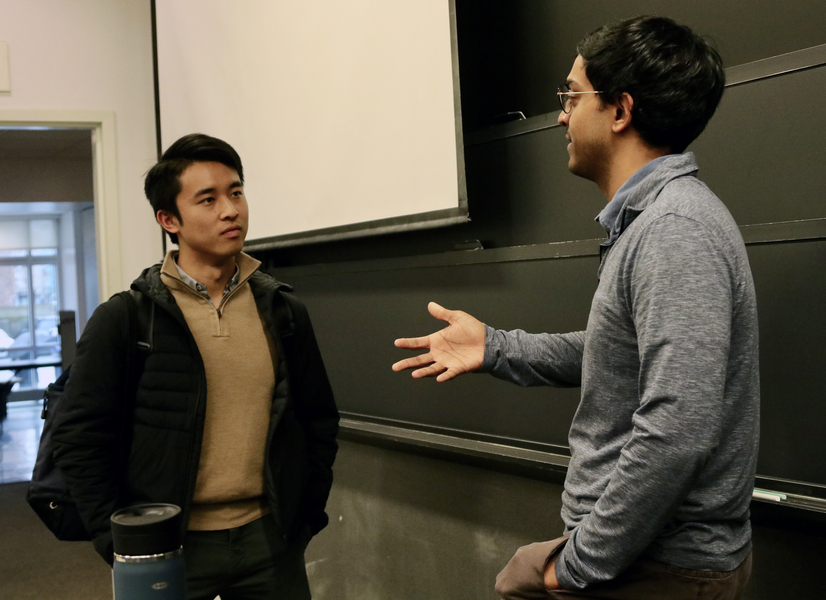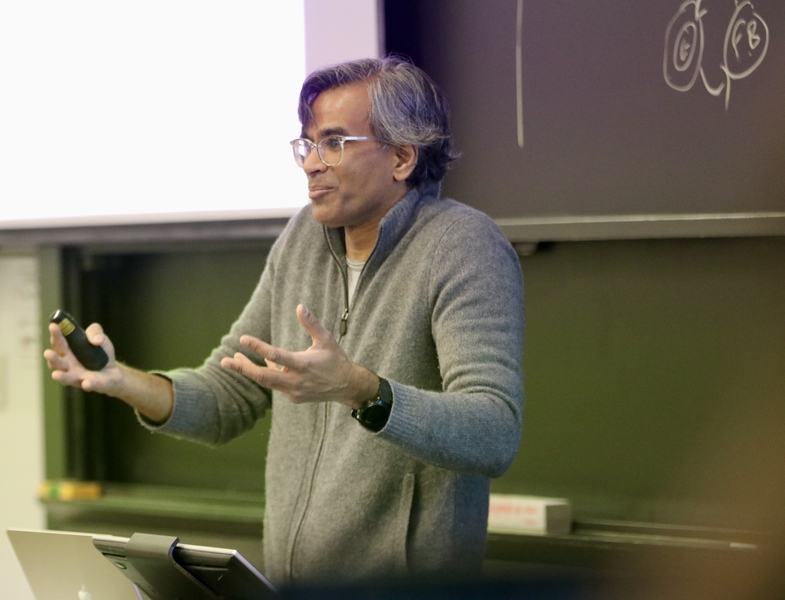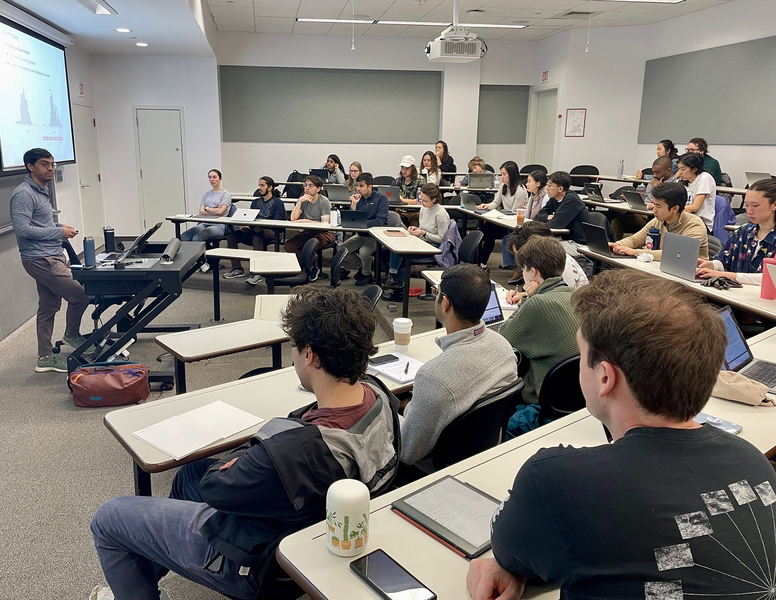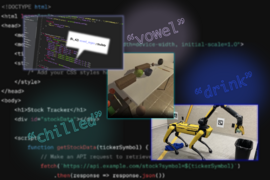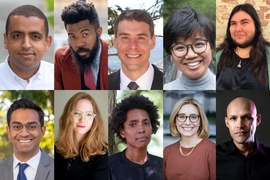Imagine a world in which some important decision — a judge’s sentencing recommendation, a child’s treatment protocol, which person or business should receive a loan — was made more reliable because a well-designed algorithm helped a key decision-maker arrive at a better choice. A new MIT economics course is investigating these interesting possibilities.
Class 14.163 (Algorithms and Behavioral Science) is a new cross-disciplinary course focused on behavioral economics, which studies the cognitive capacities and limitations of human beings. The course was co-taught this past spring by assistant professor of economics Ashesh Rambachan and visiting lecturer Sendhil Mullainathan.
Rambachan, who’s also a primary investigator with MIT’s Laboratory for Information and Decision Systems, studies the economic applications of machine learning, focusing on algorithmic tools that drive decision-making in the criminal justice system and consumer lending markets. He also develops methods for determining causation using cross-sectional and dynamic data.
Mullainathan will soon join the MIT departments of Electrical Engineering and Computer Science and Economics as a professor. His research uses machine learning to understand complex problems in human behavior, social policy, and medicine. Mullainathan co-founded the Abdul Latif Jameel Poverty Action Lab (J-PAL) in 2003.
The new course’s goals are both scientific (to understand people) and policy-driven (to improve society by improving decisions). Rambachan believes that machine-learning algorithms provide new tools for both the scientific and applied goals of behavioral economics.
“The course investigates the deployment of computer science, artificial intelligence (AI), economics, and machine learning in service of improved outcomes and reduced instances of bias in decision-making,” Rambachan says.
There are opportunities, Rambachan believes, for constantly evolving digital tools like AI, machine learning, and large language models (LLMs) to help reshape everything from discriminatory practices in criminal sentencing to health-care outcomes among underserved populations.
Students learn how to use machine learning tools with three main objectives: to understand what they do and how they do it, to formalize behavioral economics insights so they compose well within machine learning tools, and to understand areas and topics where the integration of behavioral economics and algorithmic tools might be most fruitful.
Students also produce ideas, develop associated research, and see the bigger picture. They’re led to understand where an insight fits and see where the broader research agenda is leading. Participants can think critically about what supervised LLMs can (and cannot) do, to understand how to integrate those capacities with the models and insights of behavioral economics, and to recognize the most fruitful areas for the application of what investigations uncover.
The dangers of subjectivity and bias
According to Rambachan, behavioral economics acknowledges that biases and mistakes exist throughout our choices, even absent algorithms. “The data used by our algorithms exist outside computer science and machine learning, and instead are often produced by people,” he continues. “Understanding behavioral economics is therefore essential to understanding the effects of algorithms and how to better build them.”
Rambachan sought to make the course accessible regardless of attendees’ academic backgrounds. The class included advanced degree students from a variety of disciplines.
By offering students a cross-disciplinary, data-driven approach to investigating and discovering ways in which algorithms might improve problem-solving and decision-making, Rambachan hopes to build a foundation on which to redesign existing systems of jurisprudence, health care, consumer lending, and industry, to name a few areas.
“Understanding how data are generated can help us understand bias,” Rambachan says. “We can ask questions about producing a better outcome than what currently exists.”
Useful tools for re-imagining social operations
Economics doctoral student Jimmy Lin was skeptical about the claims Rambachan and Mullainathan made when the class began, but changed his mind as the course continued.
“Ashesh and Sendhil started with two provocative claims: The future of behavioral science research will not exist without AI, and the future of AI research will not exist without behavioral science,” Lin says. “Over the course of the semester, they deepened my understanding of both fields and walked us through numerous examples of how economics informed AI research and vice versa.”
Lin, who’d previously done research in computational biology, praised the instructors’ emphasis on the importance of a “producer mindset,” thinking about the next decade of research rather than the previous decade. “That’s especially important in an area as interdisciplinary and fast-moving as the intersection of AI and economics — there isn’t an old established literature, so you’re forced to ask new questions, invent new methods, and create new bridges,” he says.
The speed of change to which Lin alludes is a draw for him, too. “We’re seeing black-box AI methods facilitate breakthroughs in math, biology, physics, and other scientific disciplines,” Lin says. “AI can change the way we approach intellectual discovery as researchers.”
An interdisciplinary future for economics and social systems
Studying traditional economic tools and enhancing their value with AI may yield game-changing shifts in how institutions and organizations teach and empower leaders to make choices.
“We’re learning to track shifts, to adjust frameworks and better understand how to deploy tools in service of a common language,” Rambachan says. “We must continually interrogate the intersection of human judgment, algorithms, AI, machine learning, and LLMs.”
Lin enthusiastically recommended the course regardless of students’ backgrounds. “Anyone broadly interested in algorithms in society, applications of AI across academic disciplines, or AI as a paradigm for scientific discovery should take this class,” he says. “Every lecture felt like a goldmine of perspectives on research, novel application areas, and inspiration on how to produce new, exciting ideas.”
The course, Rambachan says, argues that better-built algorithms can improve decision-making across disciplines. “By building connections between economics, computer science, and machine learning, perhaps we can automate the best of human choices to improve outcomes while minimizing or eliminating the worst,” he says.
Lin remains excited about the course’s as-yet unexplored possibilities. “It’s a class that makes you excited about the future of research and your own role in it,” he says.
